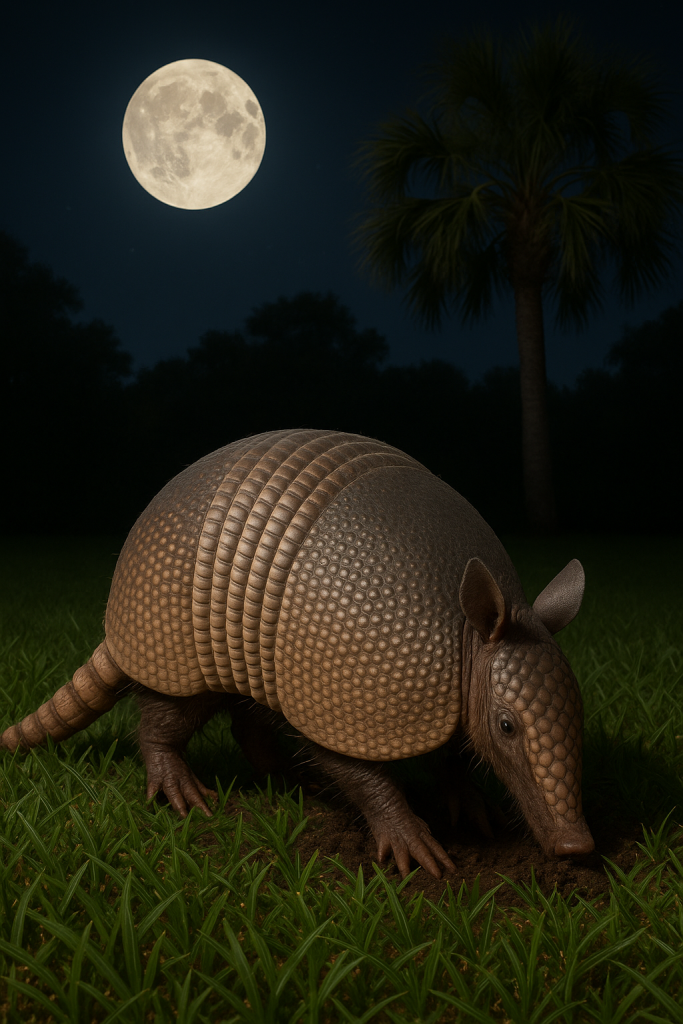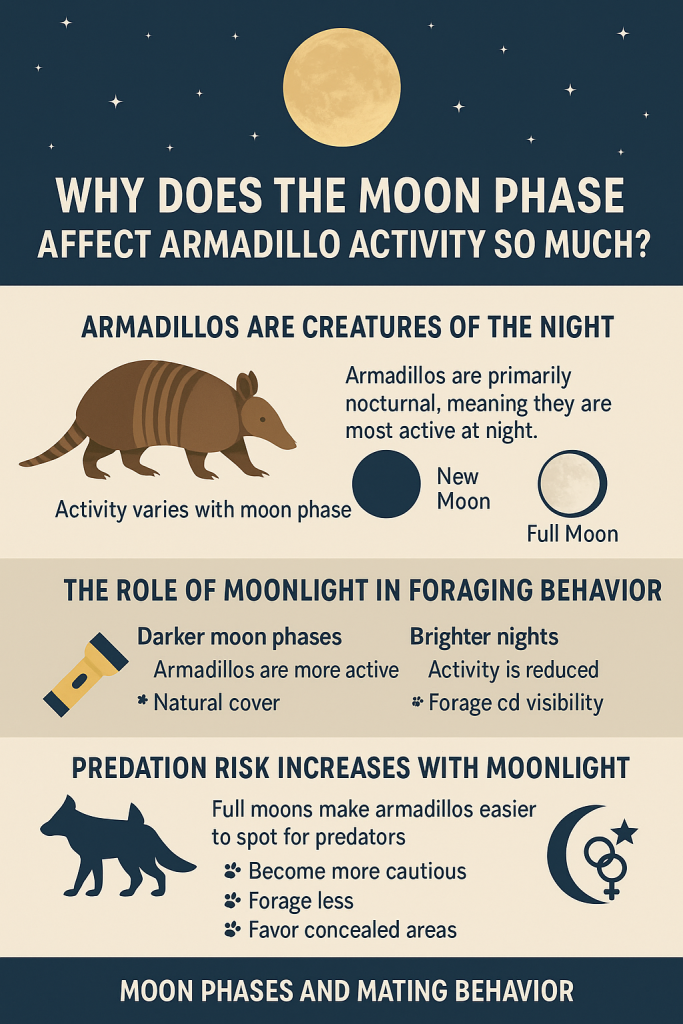When it comes to armadillos, these armored little diggers follow their own rhythms—often shaped by nature more than we realize. But how do Moon phases affect armadillo behavior? One powerful natural factor that heavily influences armadillo activity is the moon. Yes, that glowing orb in the sky does far more than light up the night—it plays a critical role in determining how, when, and even why armadillos move, forage, and dig across Florida landscapes. But why exactly do moon phases matter so much to these curious nocturnal mammals?
Let’s dig into it.
🌕 Armadillos Are Creatures of the Night
Armadillos are primarily nocturnal, meaning they are most active during the nighttime hours. This evolutionary behavior helps them stay cool in warmer climates like Florida’s and avoid daytime predators. But not all nights are the same. A new moon and a full moon present very different environments—especially when you consider predator visibility and natural light levels.
During a new moon, the night is much darker, providing more natural cover for animals like armadillos to move and dig safely. On the other hand, full moon nights can be as bright as dusk in rural areas, creating potential risks.
🌗 The Role of Moonlight in Foraging Behavior
Armadillos are avid insectivores. They dig into lawns, gardens, and under structures in search of grubs, worms, beetles, and other insects. Their sense of smell is strong, but moonlight levels may determine when they feel safe enough to forage.
- During darker moon phases, armadillos are typically more active. The darkness allows them to move around with a lower risk of being spotted.
- On brighter nights, especially under a full moon, they may reduce their activity or shift it to later parts of the night when moonlight dips lower on the horizon.

🐾 Predation Risk Increases with Moonlight
The bright light of a full moon doesn’t just illuminate the landscape for armadillos—it also makes them easier to see for predators. Coyotes, bobcats, foxes, and large owls are natural threats to armadillos, and these hunters benefit from a well-lit field. As a result:
- Armadillos become more cautious.
- They may forage less or shift locations.
- Their movement becomes more erratic, favoring thicker vegetation or concealed areas.
This adjustment in behavior is a survival tactic, helping them avoid becoming an easy target.
🌘 Moon Phases and Mating Behavior
Interestingly, moon phases might even play a role in reproductive activity. While scientific research on this in armadillos is limited, many nocturnal mammals show increased movement and mating behavior tied to lunar cycles.
Some wildlife experts believe that mating patterns or courtship displays in armadillos may increase during certain moon phases—especially when darkness offers both privacy and protection. Increased nighttime movement during new moons could be linked to searching for mates or expanding territory.

🌙 Why It Matters for Florida Homeowners
If you’ve noticed fresh holes or digging in your St. Augustine lawn after a darker night or you’re hearing rustling under your deck only during certain phases of the moon, you’re not imagining things. The moon really does influence when armadillos come out to play (or dig).
Here in Florida, where armadillos are active year-round, homeowners often report:
- More sightings during new moons
- Less activity during full moons
- Sudden bursts of lawn damage following a few cloudy or moonless nights
Understanding this pattern can help wildlife control professionals and property owners predict activity, set traps more effectively, and reduce nighttime property damage.
🔦 Trapping Considerations: Timing is Key
At ArmadilloTrapper.com, we factor in the moon cycle when setting traps and planning removal. During darker moon phases, we may increase monitoring or adjust placement, knowing that armadillos will be more active. On full moon nights, patience is key—they’re less likely to fall for a trap when they’re hunkered down.
🌌 Conclusion
The moon phase affects armadillo activity more than most people realize. These adaptive mammals adjust their nightly routines based on the lunar light levels—minimizing predation risk, maximizing foraging opportunities, and potentially influencing mating behaviors.
If you’re dealing with torn-up turf or a suspected armadillo infestation, keep an eye on the moon. It might just be giving you clues.
For professional armadillo trapping and removal services across Bradenton, Sarasota, Parrish, and the surrounding areas, contact the experts at ArmadilloTrapper.com. We understand armadillos—and the moon—better than anyone.
